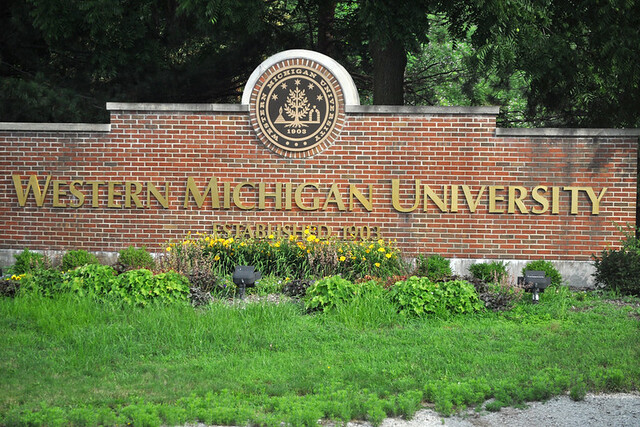Top public universities in the United States contribute significantly to making education accessible to a wide range of people. These institutions often rank among the top universities globally, contributing to academic excellence and research innovation. However, they face significant funding challenges that threaten their ability to maintain high educational standards. This article explores the landscape of top public universities in the USA, the funding challenges they encounter, and the opportunities that arise from these challenges.
Table of Contents:
Understanding Public Universities in the USA
State governments provide money to these universities, which are institutions of higher learning. Although many draw students from all over the world, their primary goal is to educate the citizens of their own states. The commitment to accessibility and affordability distinguishes top public universities in the world from private institutions, making them essential for social mobility.
Top Public Universities in the USA
Some of the most recognized public academic institutions in the United States include:

- Berkeley University of California
- Ann Arbor, Michigan University
- Virginia University
- Florida University
- Chapel Hill, North Carolina University
These institutions consistently rank among the top ranking public universities due to their academic excellence, research output, and commitment to public service. They serve as critical hubs for innovation and workforce development.
The Importance of Funding for Public Universities
Funding is crucial for the operation and development of public universities. It influences tuition rates, faculty salaries, research capabilities, and the overall quality of education. Understanding the funding structure is essential for appreciating the challenges these universities face.
Sources of Funding
- State Appropriations: Traditionally, state governments provided significant funding to public universities. However, in recent years, many states have reduced their financial support due to budget constraints.
- Tuition and Fees: As state funding decreases, public institutions have often turned to tuition increases to compensate. This shift can place a financial burden on students and their families.
- Federal Grants and Research Funding: Public universities also rely on federal funding for research initiatives and grants. However, competition for these funds is fierce, and many universities find it challenging to secure adequate resources.
- Private Donations and Endowments: Alumni and philanthropic contributions can provide additional funding. However, reliance on these sources can create disparities among institutions, with wealthier universities able to raise more funds.
The Impact of Funding Challenges
Top public colleges in the USA are facing a number of difficulties as a result of declining state support and growing tuition costs:
1. Increased Tuition Rates
As state support dwindles, many public universities have raised tuition to cover budget shortfalls. This trend has made higher education less affordable for many students, leading to increased student debt and concerns about equity in access to education.
2. Compromised Academic Quality
Funding cuts often lead to reductions in faculty positions, course offerings, and academic support services. This decline can diminish the quality of education and the overall student experience, impacting the university’s reputation and ranking among the top ranking public universities.
3. Research Limitations
Research funding is critical for innovation and maintaining competitive advantage. Reduced funding can hinder research initiatives, limiting the university’s ability to attract top faculty and students, subsequently affecting its standing among the top universities in the world.
Opportunities for Innovation and Improvement
Despite these challenges, there are opportunities for public universities to innovate and improve their funding structures.
1. Strategic Partnerships
Public educational institutions can look into joint ventures with government agencies, non-profits, and commercial businesses. Collaborations can lead to shared resources, joint research projects, and new funding avenues.
2. Online and Hybrid Learning
The rise of online education offers public universities a chance to expand their reach and reduce costs. By offering more online and hybrid programs, universities can attract non-traditional students and generate additional revenue without the need for significant physical infrastructure.
3. Fundraising and Alumni Engagement
Engaging alumni and developing targeted fundraising campaigns can significantly bolster a university’s financial standing. Successful alumni are often willing to contribute to their alma mater, especially if they feel a strong connection and see tangible results from their donations.
4. Legislative Advocacy
Public universities can advocate for increased state funding through coordinated efforts. By highlighting their value to the community, universities can create a compelling case for lawmakers to restore or increase funding.
Case Studies of Resilient Public Universities
Several public universities have successfully navigated funding challenges and emerged as leaders in their fields.

The Michigan University in Ann Arbor
Often ranked among the top public universities in the world is the University of Michigan. By fostering strong relationships with alumni and leveraging research funding, it has maintained a high standard of education despite economic fluctuations. Their strategic focus on interdisciplinary research has also attracted significant external funding.
University of California, Berkeley
UC Berkeley is another example of one of the top public educational institutions that has adapted to funding challenges. By investing in online education and innovative teaching methods, the university has expanded its reach and maintained its academic standards. Additionally, Berkeley has a robust fundraising program that engages alumni in meaningful ways.
E-Commerce and Public Universities
Expanding Accessibility Through Online Learning
Top public universities in the USA are leveraging e-commerce to broaden their educational reach. By offering online and hybrid courses, they can attract non-traditional students, making higher education more accessible amid rising tuition and declining state funding. This shift diversified revenue streams and enhanced flexibility in learning.
Strategic Partnerships and Funding Innovation
E-commerce initiatives also enable public universities to form strategic partnerships with private companies and non-profits. These collaborations can boost research funding and create tailored online programs. By innovating their funding models, universities can maintain educational excellence while navigating financial challenges.
Software Development in Top Public Universities

Fostering Innovation Through Research
Top public universities in the USA are hubs for software development, driving innovation through robust research programs. These institutions attract talented faculty and students who collaborate on cutting-edge projects, often resulting in groundbreaking software solutions. This research not only enhances academic standing but also contributes to advancements in technology and industry partnerships.
Preparing the Workforce for the Future
Additionally, public academic institutions are committed to preparing the next generation of software developers. By offering specialized degree programs and hands-on learning opportunities, they equip students with essential skills for the evolving tech landscape. This focus on practical experience ensures graduates are well-prepared to meet industry demands and contribute to the growing field of software developme
Global Comparisons: Top Public Universities in Pakistan
While examining funding challenges in the USA, it’s essential to compare these institutions with top public universities in Pakistan, such as:
- Islamabad’s Quaid-i-Azam University
- In Lahore, the Lahore University of Management Sciences
- and the Punjab University
These universities face their own set of funding challenges, primarily due to economic conditions and reliance on government support. However, they also explore opportunities for international collaboration and private funding, similar to their American counterparts.
Conclusion
Top public universities in the USA are at a crossroads. While they face significant funding challenges, opportunities for innovation and collaboration abound. By adapting to changing economic conditions and focusing on strategic partnerships, these colleges may continue to offer top-notch instruction and hold their place among the world’s best public universities.
As they navigate these challenges, it is crucial for stakeholders—students, faculty, administrators, and legislators—to work together to ensure that The general population universities remain accessible and capable of delivering exceptional education for future generations. The journey may be complex, but the potential rewards for society as a whole are profound.




